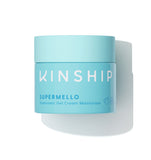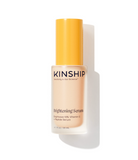Acne spot treatments are concentrated formulas designed to target and treat pimples, blemishes, and occasional breakouts.
These remedies tackle breakouts at the source (oil, blackheads, clogged pores), help prevent potential scarring, and reduce inflammation in the affected area.
Using these treatments correctly can significantly enhance their effectiveness while minimizing potential side effects.
However, you may have questions such as, "What does acne spot treatment do, and does spot treatment work?"
This guide will explore what spot treatments are, how they work, and the best practices for using them.

What Is A Spot Treatment?
Acne spot treatments, like our Pimple Potion, deliver a high concentration of active ingredients directly to the acne, helping to reduce inflammation, clear out clogged pores, and speed up healing.
Each of these ingredients has unique properties that make them effective in the fight against acne.
- Beta Hydroxy Acid (BHA): Salicylic acid, a BHA, exfoliates the skin, clears clogged pores, and reduces inflammation.
- Benzoyl Peroxide: Kills bacteria on the skin that can cause acne and helps to remove dead skin cells and excess oil.
- Sulfur: Dries out the skin's surface to help absorb excess oil that may contribute to a pimple breakout.
- Alpha Hydroxy Acids (AHA): Exfoliate dead skin, fight inflammation, and diminish acne scars by promoting new skin growth. Common AHAs in acne products include glycolic acid and lactic acid, such as the ingredients found in our Self Smooth Glycolic Minimizing Toner-Serum.
- Niacinamide: The active form of vitamin B3 lightens dark spots, evens skin tone, and improves skin texture.
- Vitamin C: Brightens dark spots and hyperpigmentation for all skin types by targeting excess pigmentation without overall skin lightening.
- Azelaic Acid: Its antimicrobial and anti-inflammatory properties effectively treat skin conditions such as acne, blemishes, and rosacea.
These acne treatments come in various forms—creams, gels, and patches—each designed with specific targets.
- Creams: Thicker and more hydrating, suitable for dry or sensitive skin.
- Gels: Lighter and oil-free, ideal for oily or acne-prone skin.
- Patches: Pre-dosed patches infused with active ingredients for continuous application.
Trying out cream acne treatments, like our Supermello Hyaluronic Gel Cream Moisturizer, helps reduce acne while keeping your skin soft and fresh.
Recommended Products
How to Use Acne Spot Treatment Products
To use acne spot treatments effectively in your skincare routine, start with a patch test, prepare your skin properly, and follow up with an aftercare routine.
Each step has specific actions to ensure the treatment works well and minimizes side effects.
Preparing Your Skin
Properly preparing your skin includes several crucial initial steps, such as conducting patch tests, thorough cleansing, and exfoliation to ensure your face is primed and ready for the acne spot treatment.
1.) Patch Testing
Before using any new acne spot treatment, apply a tiny amount to a discreet area like your inner arm, and wait 24 hours to see if any irritation occurs.
This step is crucial to avoid allergic reactions.
2.) Cleansing
Before applying an acne spot treatment, it is crucial to cleanse your skin thoroughly. Clean skin ensures that the spot treatment can penetrate effectively.
A gentle, non-comedogenic cleanser like Kinship’s Naked Papaya Gentle Enzyme Cleanser is ideal. This cleanser helps remove impurities without stripping your skin of its natural moisture.
Using lukewarm water and gently patting the skin dry is also crucial for setting you up for success.
3.) Exfoliation
Exfoliating removes dead skin cells that can clog pores and exacerbate acne. Depending on your skin type, it is best to exfoliate 2-3 times a week.
Daily use of an exfoliation product can lead to irritation, so it is essential to always find balance and listen to your skin.
Application of Acne Spot Treatment
Getting the most out of your acne spot treatment means following the right skin routine order.
You are off to a great start if you have Kinship’s Pimple Potion.
This dermatologist-tested treatment contains 2% salicylic acid and retinal that help clear and prevent blemishes. It's safe for sensitive skin and benzoyl peroxide-free.
Nonetheless, follow a step-by-step guide, avoid common mistakes, and use it just often enough to see results without irritating your skin.
Here is a simple step-by-step guide on how to apply spot treatments:
- Wash your entire face with a gentle cleanser and pat dry.
- Dip a clean cotton swab or your fingertips into the spot treatment.
- Apply a small amount (pea-sized or smaller) directly to the pimple, not the whole face.
- Let the treatment dry completely before applying any other skincare products.
Here is a quick list of Dos and Don'ts to also keep in mind:
- Apply the spot treatment at night to allow your skin to absorb it better while sleeping.
- Don’t apply the treatment all over your face; it is meant for individual spots.
- Do follow the instructions on the product label or prescription.
- Don’t use more than the recommended amount.
- Do use a moisturizer after the treatment to provide skin hydration.
- Don’t mix with other active ingredients unless stated in the dermatologist's prescription.
Frequency of Use:
Start by applying the spot treatment once a day. If your skin tolerates it well, gradually increase it to twice daily.
Keep an eye on how your skin reacts and adjust as needed. It might take a few weeks to see noticeable results.
Aftercare
After treating acne spots, follow up with a proper aftercare routine.
Remember to moisturize your skin, apply sun protection, and avoid irritants so you get the maximum benefits of doing a spot treatment religiously.
- Moisturizing: After applying an acne spot treatment, use a non-comedogenic moisturizer like Kinship's Supermello Gel Cream Moisturizer. It hydrates the skin without clogging pores.
- Sun Protection: Sun exposure worsens acne and increases the risk of scarring. Apply SPF 30+ sunscreen every morning, even on cloudy days. Opt for a mineral sunscreen like Kinship's Self Reflect Zinc Oxide Mineral Sunscreen.
- Avoiding Irritation: Avoid unnecessarily touching your face to prevent bacteria from spreading. Stick to a gentle skincare routine to support healing.
NOTE: Of course, sunscreen is unnecessary when doing aftercare at night.
Potential Side Effects of Using Acne Spot Treatments
While acne spot treatments are effective, some products can sometimes cause side effects, especially if not used correctly.
Here are some common side effects and solutions to manage them:
1.) Dryness
Many spot treatments, particularly those containing salicylic acid or benzoyl peroxide and those not formulated for easily irritated skin, can cause dryness.
Fight back with a gentle, oil-free moisturizer, and apply regularly to keep your skin hydrated.
2.) Redness and Irritation
These can occur especially for those with sensitive skin.
If you experience either, reduce the application frequency to once a day or every other day and consider a gentler spot treatment formulation.
3.) Peeling
Exfoliating ingredients like salicylic acid can cause mild peeling.
Mild peeling is normal, but reduce the frequency or consider a less exfoliating formula if it becomes excessive. Use a hydrating moisturizer to soothe the skin and reduce peeling.
If acne leaves pigmentation, use a spot treatment with salicylic acid, glycolic acid, niacinamide, Vitamin C, or azelaic acid. These can cause marks to fade in three to four months.
4.) Stinging or Burning
A burning or stinging feeling is more likely to occur in solutions with high concentrations of active ingredients. If you experience these side effects, consider alternative formulations.
If you have very dry skin, use a cream-based formula. Gels or patches might be better suited for oily skin.
If the stinging persists, consult a dermatologist.

Seeking Professional Help

A dermatologist can provide personalized treatment plans if you struggle to manage your acne with over-the-counter spot treatments.
Here are the most important signs that indicate you might need to see a dermatologist:
- Severe or cystic acne: Over-the-counter treatments may not be effective for severe acne blemishes.
- Persistent acne: If your acne problem areas do not improve after several weeks of consistent morning and night spot treatment.
- Scars: A dermatologist can help minimize the appearance of acne scars.
- Painful or inflamed pimples: These could be a sign of a more serious underlying condition.
A dermatologist will examine your skin, discuss your medical history, and recommend a treatment plan that may include:
- Prescription topical medications: Stronger formulations of acne-fighting ingredients.
- Oral medications: Antibiotics or retinoids to target acne from within.
- Acne surgery: Extracting cysts or nodules or procedures like laser treatment.
Frequently Asked Questions (FAQs)
What Happens if I Use Too Much Spot Treatment?
Certain acne-fighting ingredients can be quite drying, and a common mistake is using them too frequently or excessively.
Too much spot treatment can disrupt your skin's natural barrier, leading to excessive dryness, redness, and even more breakouts.
Can You Put Spot Treatment on a Popped Pimple?
Popping pimples can damage your skin. However, applying a spot treatment with antibacterial properties can help minimize the damage if you pop a pimple.
That said, persistent acne should be evaluated by a dermatologist.
Key Takeaways on How to Use Acne Spot Treatments
Acne spot treatments can be powerful weapons in the fight against breakouts, but using them correctly is crucial for maximizing benefits and minimizing irritation.
TL;DR? Here are the key takeaways to remember:
- Follow a Proper Routine: Start by cleansing, apply the treatment properly, and finish by moisturizing.
- Consistency is Key: Be patient. Clear skin takes time! To see results, you need to use it consistently for several weeks.
- Listen to Your Skin: Everyone’s skin is unique. If you experience adverse reactions, such as burning from your moisturizer, it is time to reassess your skincare routine.
- Seek Professional Advice: If you have persistent or severe acne or are unsure which treatment to use, consult a dermatologist.
- Less is more: Using spot treatments too frequently or excessively can dry out or irritate the skin. Start with a thin layer and increase the amount gradually, if needed.
Follow these steps and tips when using acne spot treatments to target blemishes and achieve clearer skin.
Remember, consistency and a tailored approach are essential for achieving clear and healthy skin.
Do not hesitate to consult a dermatologist for expert guidance on your acne journey.
Recommended Products



